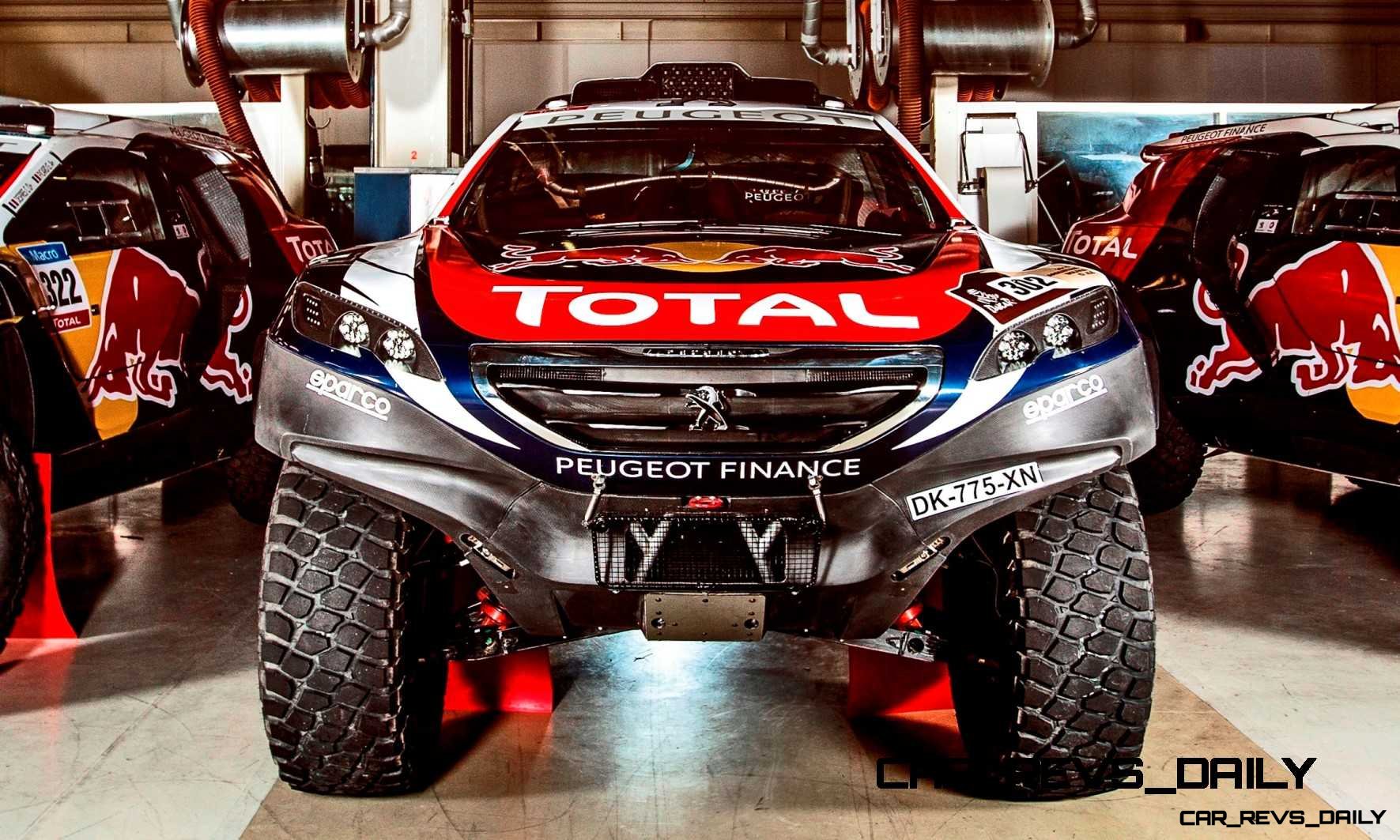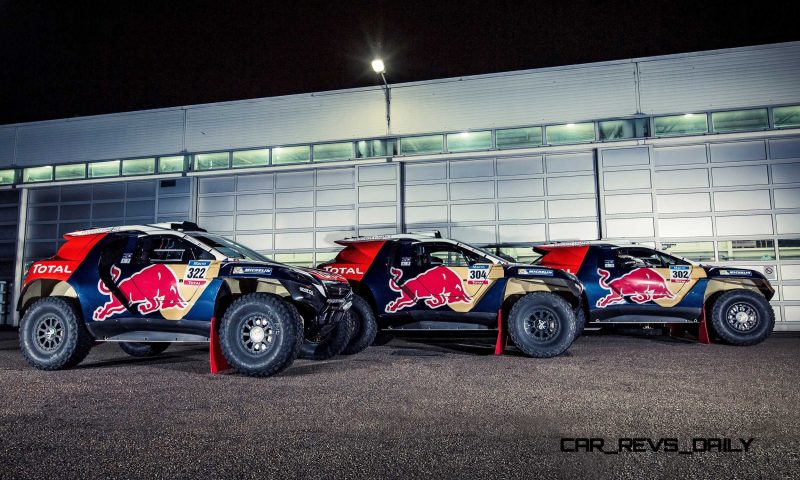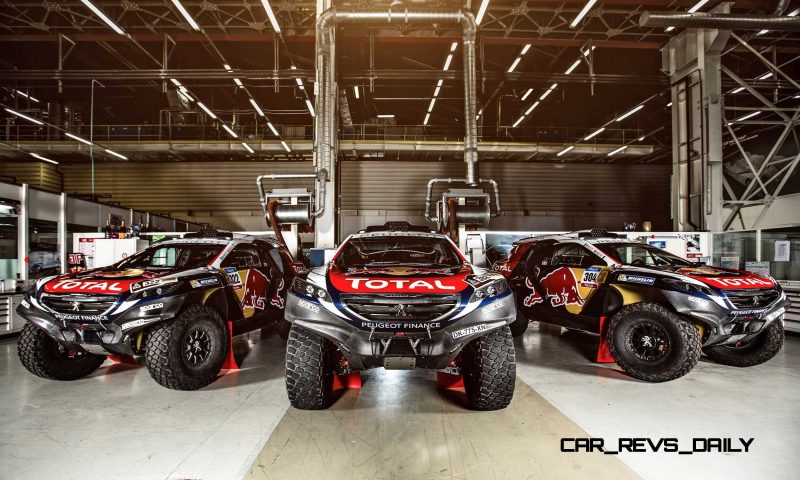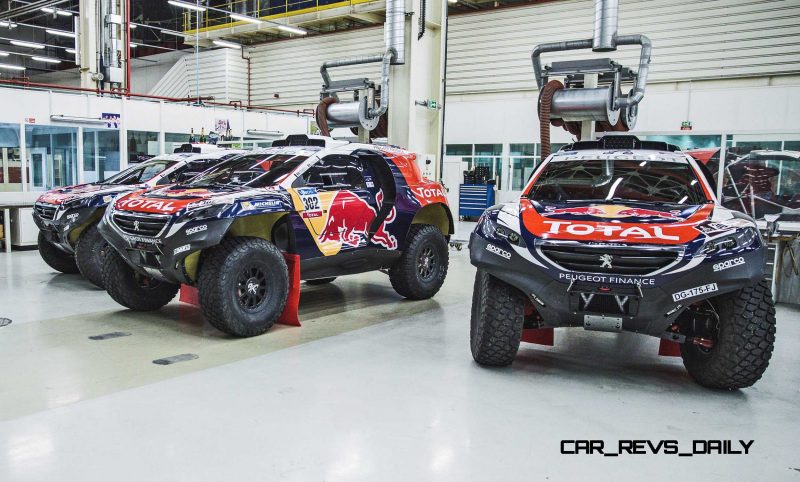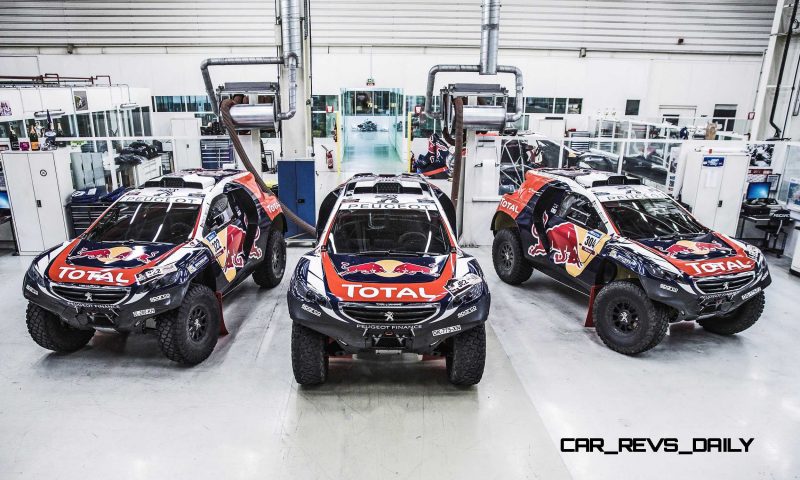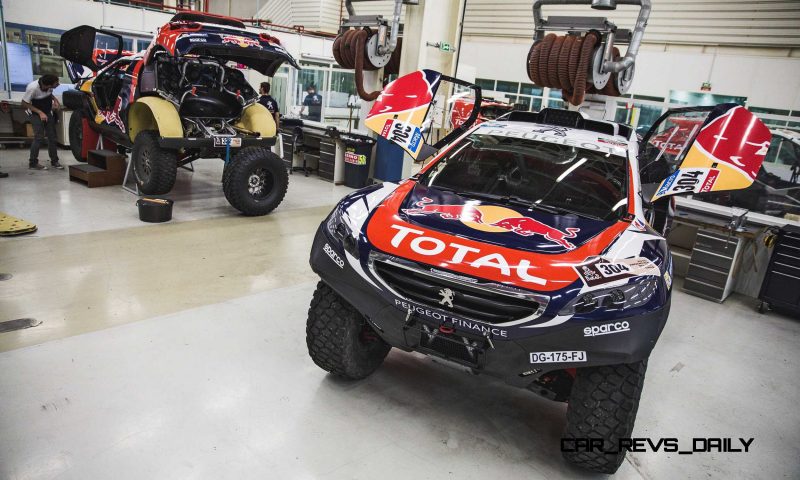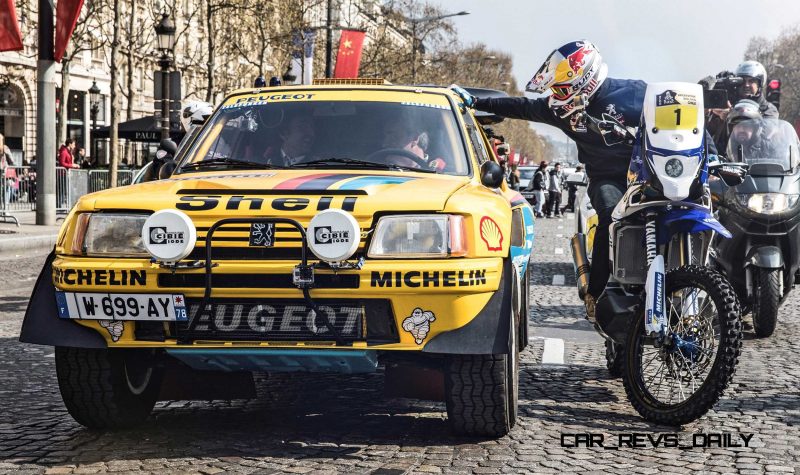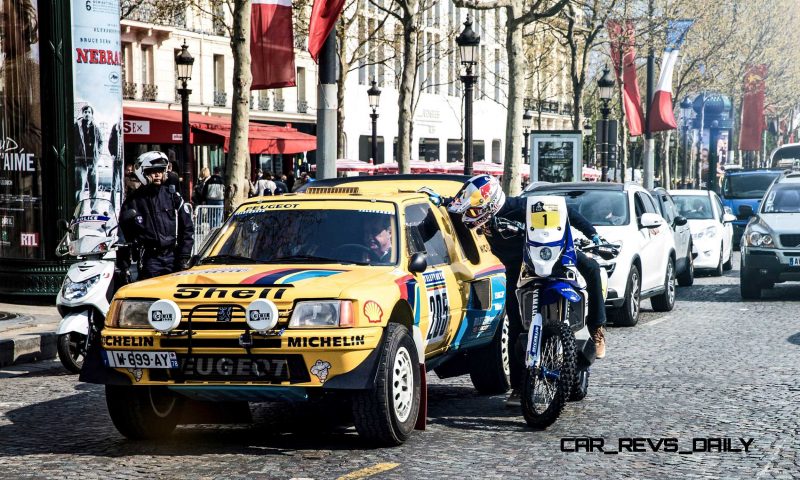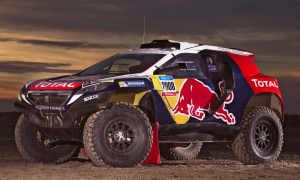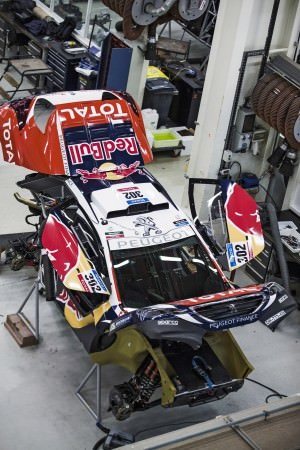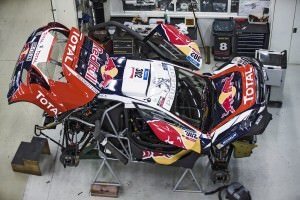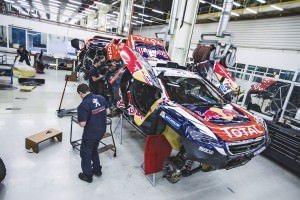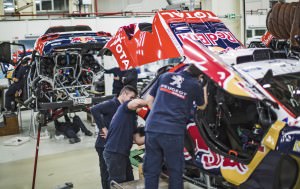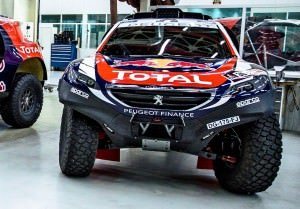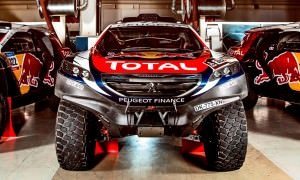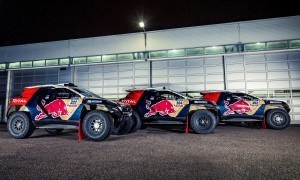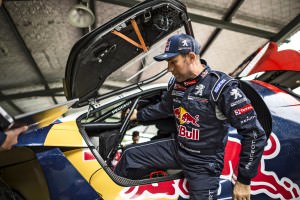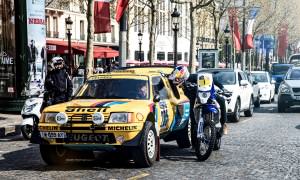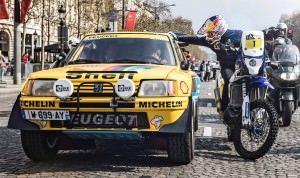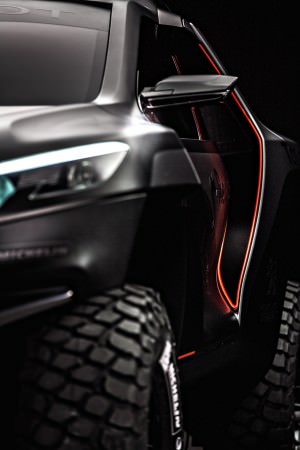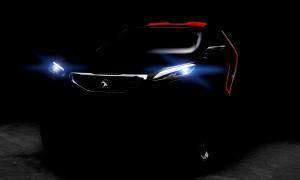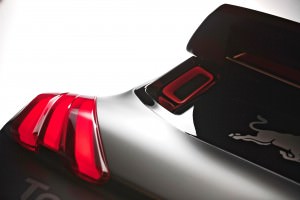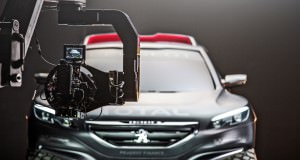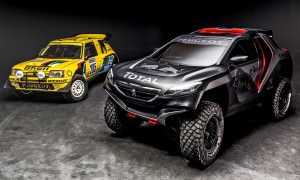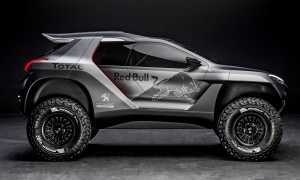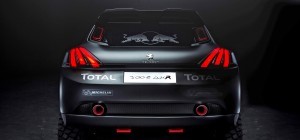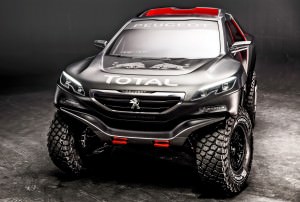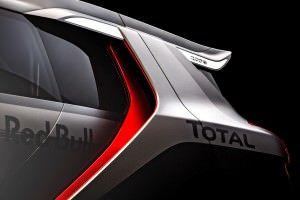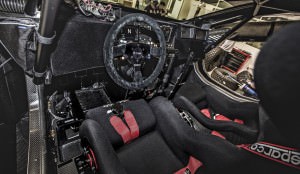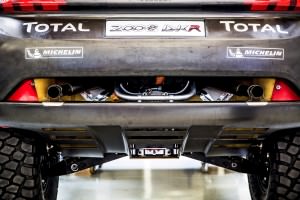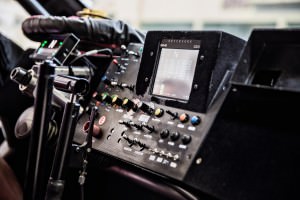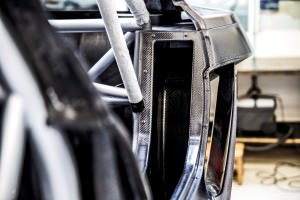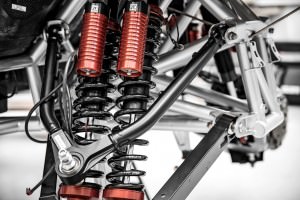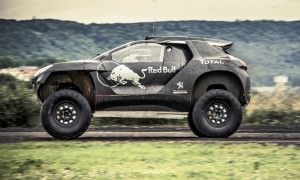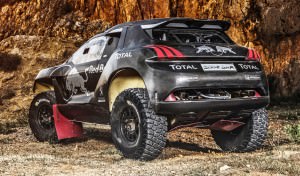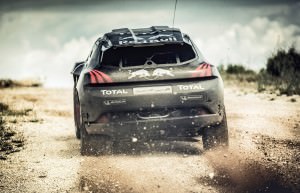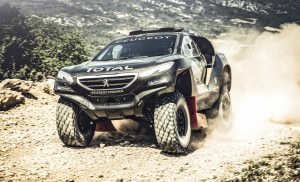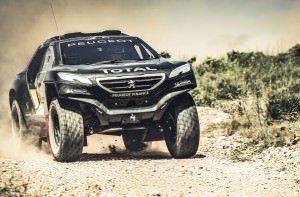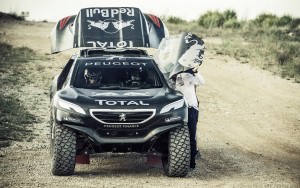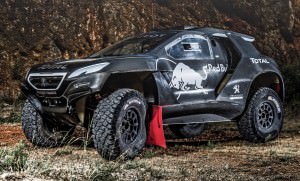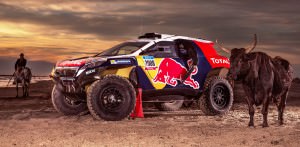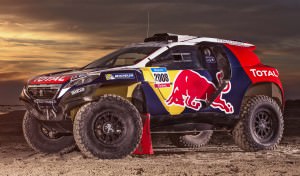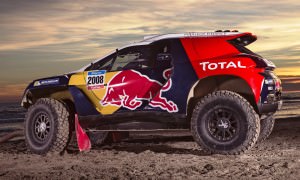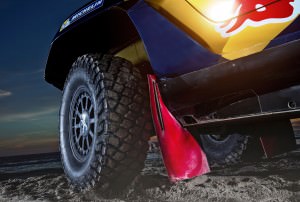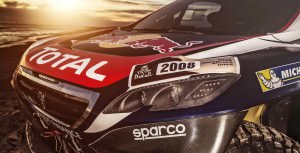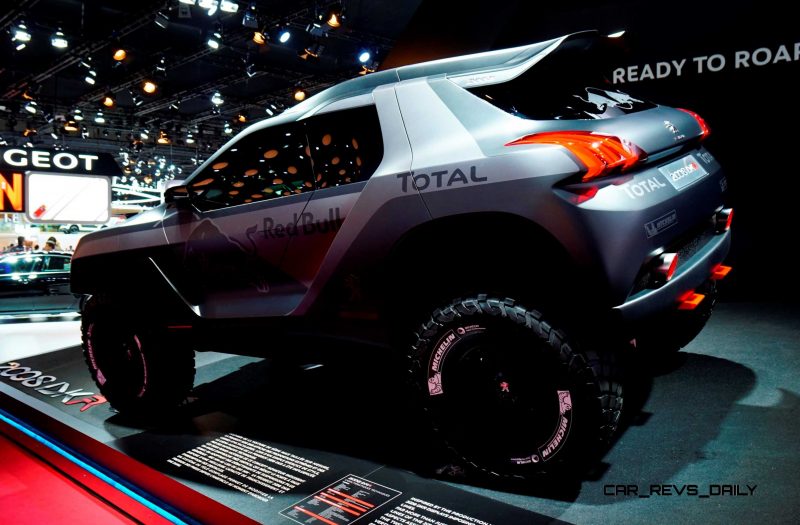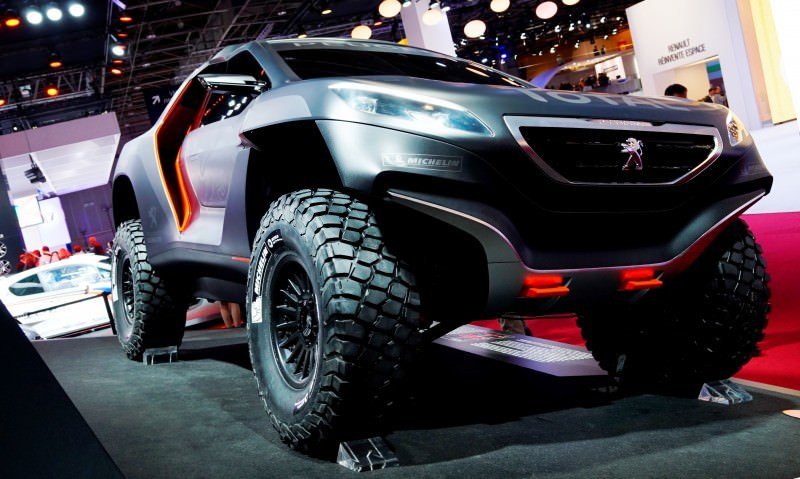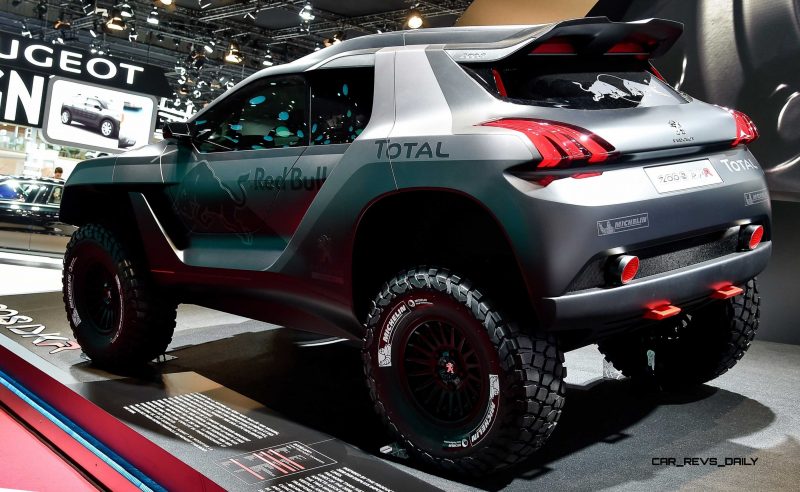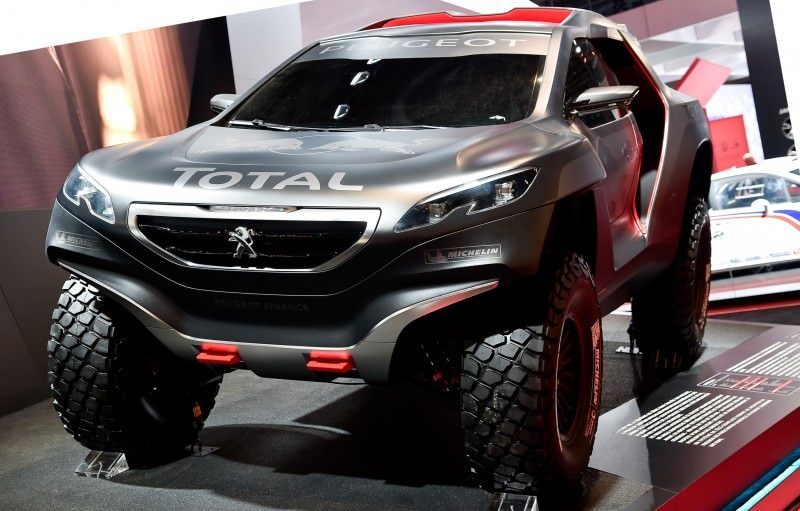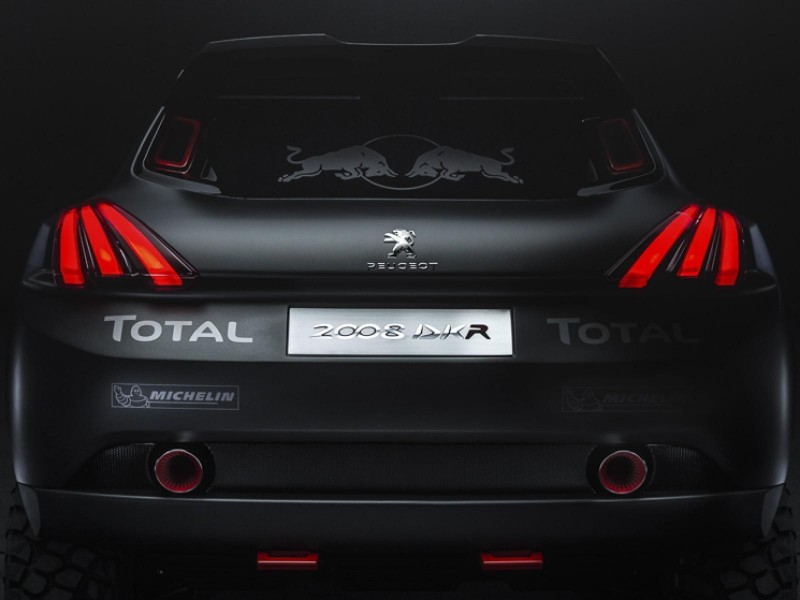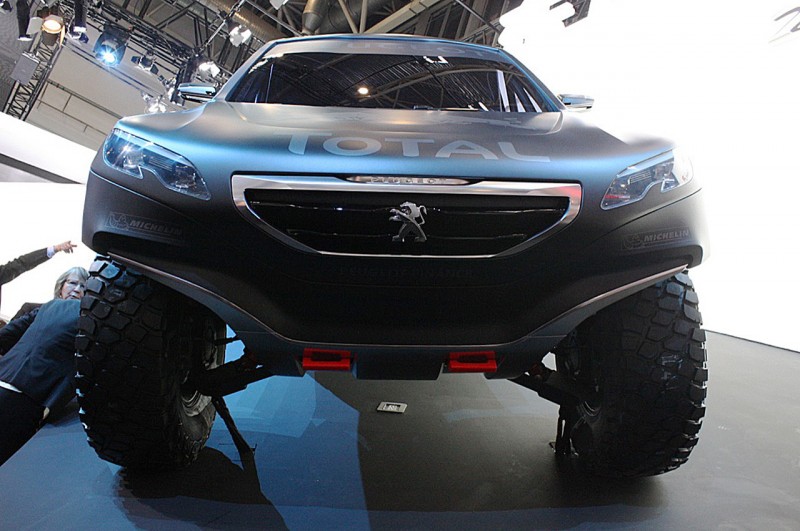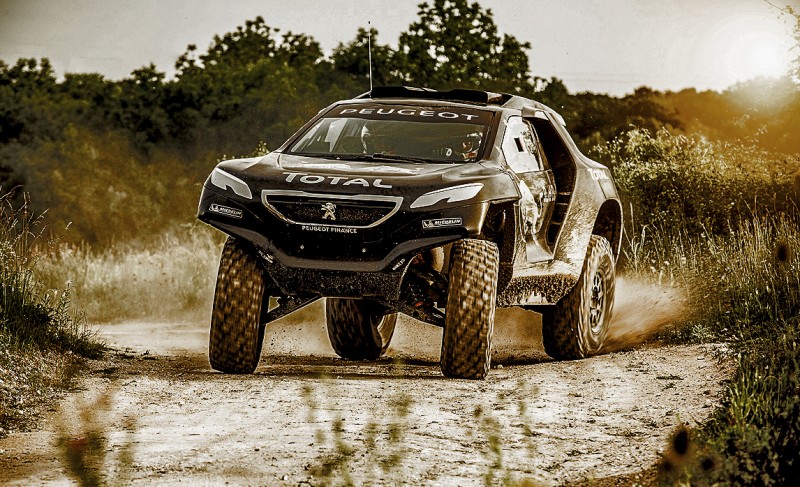The Peugeot DKR prototype currently blasting through the Chilean sahara on the 2015 Dakar rally has been a bit of a wallflower before the race. Few official photos of the truck have been seen.
The mid-engine, rear-drive off-roader is an evolution of the Peugeot 208 T16 Pikes Peak car, but raised dramatically for its new Dakar mission. The same team that created the LeMans 908 HDi FAP cars have created both of these latest racing Pugs, and all have shared the primary super-diesel engine power.

This 3.0-liter twin turbo-diesel is a total torque monster: it pushes out 590 pound-feet of torque and 340-horsepower, with a redline of 5000-rpm. Max speed is limited to 125-mph by the low gearing of the six-speed sequential transmission. We estimate a 0-60-mph sprint time of 5.0-seconds, nearly double the 208 T16 Pikes Peak racecar’s time thanks to the huge 37-inch mud tires all around.
2014 Peugeot 2008 DKR Prototype
Technical data – 2008 DKR:
ENGINE
Type V6 bi-turbo diesel
Cubic capacity 2993cc
Number of valves 24
Position Mid-rear
Number of cylinders V6 (60° ‘vee’ formation)
Maximum power 340hp
Torque 800Nm
Maximum revs 5,000rpm
Top speed 200kph / 125mph
Lubricant TOTAL QUARTZ 10 W 50
TRANSMISSION
Type Two-wheel drive
Gearbox Longitudinally mounted six-speed manual sequential gearbox
Lubricant TOTAL 755 HPX 80 W 140
CHASSIS
Type Tubular steel
Bodywork Carbon
SUSPENSION / BRAKES / STEERING
Suspension Double wishbones
Springs Coil springs (two per wheel)
Dampers Adjustable (two per wheel)
Travel 460mm
Anti-roll bars Front and rear
Steering and brakes Hydraulic power steering
Discs (vented) Hydraulic dual circuit, one-piece light alloy four-piston callipers
Diameter Front and rear discs: 355mm
Wheels (Front / rear) Aluminium two-piece wheels (17 x 8.5)
Tyres Michelin 37/12.5×17
DIMENSIONS
Length 4,099mm
Width 2,033mm
Height 1,912mm
Front / rear overhang 641mm / 658mm
Wheelbase 2,800mm
Fuel tank capacity 400 litres
ALL YOU NEED TO KNOW ABOUT THE 2015 DAKAR
-
Bluffer’s guide to the 2015 Dakar Rally
-
Why it’s such a challenge to man and machine
-
How PEUGEOT Sport’s unbeaten record remains intact
PEUGEOT is competing in the 2015 Dakar Rally hoping to write a new chapter in a remarkable history at the event. When it entered in 1987, PEUGEOT became the first car manufacturer to take on the unique challenge posed by this gruelling endurance race. It then sealed its place in the record books by winning at its first go. PEUGEOT followed that up with another three consecutive wins with the iconic 205 and 405 T16 Rally Raid models before stopping to take on the equally tough Le Mans 24 Hours. As a manufacturer entry, PEUGEOT Sport remains unbeaten in the Dakar. For 2015, PEUGEOT is entering the Dakar with the amazing looking 2008 DKR. Here are 10 things you should know about this incredible event and PEUGEOT’s participation in it.
It came about because someone got lost in a desert
The Dakar was dreamt up by motorbike racer Thierry Sabine after he got lost in the southern part of the Sahara desert on the 1977 Abidjan-Nice Rally. Realising that navigating the remote sand dunes of a desert posed drivers and bike riders with a unique challenge, he organised the inaugural event which left Paris in December 1978. It gets its name from the capital of Senegal: the rally used to run 6,200miles from Paris to Dakar. Since 2009, unrest in Africa, particularly Mauritania, means it has taken place in Argentina and Chile.
An endurance event like no other
The Dakar has been called the toughest rally in the world because it represents both a motor race and an orienteering challenge. Like other rally raids, it’s an endurance event that takes place over much tougher terrain than regular rallies. This means the vehicles have to be true off-road vehicles rather than the high performance versions of road cars that compete in rallies.
Two weeks of action
The 2015 Dakar starts in Buenos Aires, the capital of Argentina, on 4th January over 6,000miles with some individual stages covering up to 560miles, visiting Bolvia and Chile, before the finish back in Buenos Aires on 17th January.
How many take part?
In 2014, 431 competitors started the Dakar. There were 147 cars, 174 motorbikes, 40 quad bikes and 70 trucks. Entries were made up of 51 nationalities. The highest proportion was French (17%) followed by the Dutch (13.5%) and Argentinians (12.6%). Of the 431 entries, 48% finished.
All-comers welcome
The Dakar is open to all-comers with professional drivers and manufacturer teams pitting their wits and powers of endurance against amateurs. There are four categories of vehicle: motorbikes, quad bikes, cars and trucks. All are either heavily modified or purpose-built. The car class is for vehicles weighing less than 3500kg and for trucks for vehicles that are heavier than 3500kg.
Which class is PEUGEOT entering?
The Peugeot 2008 DKR is in the T1 Group for ‘Improved Cross-Country Vehicles’. This is subdivided according to whether they’re petrol or diesel, two or four-wheel drive. The T2 Group is made up of ‘Cross-Country Series Production Vehicles’. These are subdivided into petrol and diesel categories and tend to be all four-wheel drive. Peugeot has chosen to run a turbo-diesel with two-wheel drive.
How many crew per car?
Each car has a driver and co-driver. Team Peugeot Total includes Carlos Sainz (Dakar winner), Stéphane Peterhansel (record-breaking 11 Dakar wins) and Cyril Despres (5 Dakar wins).
Navigation is done by road books/maps issued the day before and cars are constantly located by GPS.
Drivers and cars out on their own
Much of the route is off-road, covering dunes, mud, camel grass and rocks. For the past three years, the Dakar has run some Marathon Stages for bikes and quad bike racers. For 2015 all competitors will have to endure the Marathon Stages. These run over two days during which vehicle crews can’t call upon their teams to help fettle or fix their machines, sleeping in bivouacs makes it a unique event.
How PEUGEOT made history
PEUGEOT became the first car manufacturer to compete in the event when it entered the 1987 Paris-Dakar. It was rewarded by a win with former world rally champion Ari Vatanen at the wheel of a 205 T16 Grand Raid. His 1988 effort was derailed when, after 13 stages and while holding a comfortable lead, his 405 T16 Grand Raid was stolen from a service area. The car was returned too late and Vatanen was disqualified leaving team-mate and fellow Finn Juha Kankkunen to win in a 205 T16 Grand Raid. Vatanen won again for PEUGEOT in 1989, driving a 405 T16 Grand Raid. His third win came the following year, despite a faulty compass and ill co-driver slowing his progress.
Tragedy, terrorists and Thatcher’s son
The Dakar hit the headlines in the UK in 1982 when the then prime minister Margaret Thatcher’s son Mark and his co-driver disappeared for six days. They were eventually found unharmed. The unforgiving nature of the terrain that the event covers has led to a number of fatalities over the years, including founder Thierry Sabine who died when his helicopter crashed during a sand storm in the 1986 race. In 2008 the Dakar was cancelled days before it was due to start because African organisations affiliated to the Al Qaeda terror group made a direct threat against it. It has run in South America ever since.
ABOUT PEUGEOT & PEUGEOT SPORT
The PEUGEOT brand can trace its roots back to 1810. It was in 1889 that it began producing automobiles, thus in 2014 it celebrates 125 years of vehicle production with over 60 million sold. Demonstrated through its brand signature ‘Motion & Emotion’, PEUGEOT is present in 160 countries, has 10,000 franchised dealers, and is recognised for the quality and design excellence of its products.
In 2013 PEUGEOT sold 1.5m vehicles worldwide and is represented in the majority of markets around the world with a strategy to continuously move the brand up-market. Its weighted CAFE (Corporate Average Fuel Emissions) CO2 emissions are just 110.8g/km.
The UK is PEUGEOT’s 3rd largest market. The Brand has a reinvigorated range of quality products and services that provide and combine a refined design with great attention to detail, and a unique driving experience delivering the satisfaction and emotion identifiable with every PEUGEOT product.
PEUGEOT Sport was formed in 1981 by Jean Todt. In 1984 the 205 Turbo 16 (T16) Group B was the first mid-engined four-wheel drive car and took its first victory in Finland in the hands of Ari Vatanen. In 1985 Peugeot won the Manufacturer’s & Driver’s title (Timo Salonen) in the World Rally Championship. Peugeot won the Dakar Rally four times – in 1988 – 1990 – twice with 205 T16 and twice with the 405 T16. In 1988 At the Pikes Peak Hillclimb in Colorado Peugeot won twice (1988 & 1989) with the 405 T16. In 1992 Peugeot won the Le Mans 24-hour race with the 905 and in 1993 followed it with a perfect 1-2-3 finish. In 1994 Peugeot powered McLaren in Formula One, then Jordan GP in 1995-97 and Prost GP 1998-2000. In 2000 the 206 WRC won the Manufacturer’s (2000-2002) & Drivers title with Marcus Grönholm. In 2007 Peugeot won the Intercontinental Rally Challenge (IRC) 3-times (2007-2009) with the 207 S2000. In 2009 Peugeot won the Le Mans 24-hour race again with the 907, winning many other LMS races around the world. In 2013 Peugeot returned to Pikes Peak with the 208 T16 Pikes Peak driven superbly by Sébastien Loeb who conquered the hillclimb in a time of just 8:13.878, beating the previous record by an astonishing 90 seconds. In 2015 it returns to the Dakar Rally with the 2008 DKR.
NEXT PAGE
2014 Peugeot Quartz

Tom Burkart is the founder and managing editor of Car-Revs-Daily.com, an innovative and rapidly-expanding automotive news magazine.
He holds a Journalism JBA degree from the University of Wisconsin – Madison. Tom currently resides in Charleston, South Carolina with his two amazing dogs, Drake and Tank.
Mr. Burkart is available for all questions and concerns by email Tom(at)car-revs-daily.com.
Pages: 1 2

